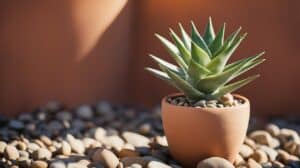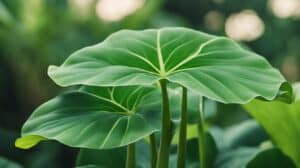Corydalis solida is a beautiful and delicate plant that is a favorite among novice gardeners.
It is a species of flowering plant that belongs to the family Papaveraceae and is native to Europe.
This plant is commonly known as the rock harlequin or spring corydalis and is known for its beautiful, bright pink or purple flowers that bloom in early spring.

Caring for corydalis solida is relatively easy, and it is an excellent choice for novice gardeners. However, it does require some specific care to thrive.
This guide is designed to help novice gardeners care for their corydalis solida plants and ensure that they bloom beautifully year after year.
Whether you are a seasoned gardener or just starting, this guide will provide you with all the information you need to grow and care for your corydalis solida.
Understanding Corydalis Solida
Corydalis Solida is a charming and delicate plant that can be a great addition to any garden.
Also known as Spring Corydalis, this plant is native to Europe and Asia. It belongs to the family Fumariaceae and is a perennial that grows from a bulb.
The plant features soft green leaves and beautiful, tubular flowers that come in shades of pink, purple, and white.
The flowers bloom in early spring and can last for several weeks.
Corydalis Solida prefers partial shade and moist, well-draining soil.
It can be grown in containers or in the ground, and it’s perfect for rock gardens, woodland gardens, or as a border plant.
To care for Corydalis Solida, it’s important to keep the soil moist but not waterlogged.
Adding a layer of mulch around the plant can help retain moisture and keep the roots cool.
Fertilizing is not necessary, but a light application of balanced fertilizer in the spring can help promote healthy growth.
Deadheading spent flowers can encourage the plant to produce more blooms.
Overall, Corydalis Solida is a low-maintenance plant that can add a pop of color to any garden.
With proper care, it can thrive and bring joy to novice and experienced gardeners alike.
Planting and Propagation

Choosing the Right Location
When selecting a location to plant Corydalis Solida, it is important to consider its preference for partial to full shade, especially in regions with hot summers.
The plant can tolerate some morning sun, but it should be protected from the harsh afternoon sun.
Soil Preparation
Corydalis Solida prefers well-draining soil that is rich in organic matter.
Before planting, amend the soil with compost or aged manure to improve its texture and fertility.
The pH level of the soil should be slightly acidic to neutral, ideally between 6.0 and 7.0.
Planting Techniques
Plant Corydalis Solida bulbs in the fall, ideally 4-6 weeks before the first frost. Dig holes that are 2-3 inches deep and 2-3 inches apart.
Place the bulbs with their roots facing down and cover them with soil, gently pressing the soil around the bulbs to eliminate air pockets.
Water the bulbs thoroughly after planting and continue to water them regularly throughout the growing season.
Corydalis Solida can also be propagated by division.
In the fall or early spring, dig up the plant and gently separate the bulbs, making sure each division has at least one healthy shoot and root system.
Replant the divisions in a suitable location and water thoroughly.
By following these planting and propagation techniques, novice gardeners can successfully grow and propagate Corydalis Solida.
Maintenance and Care

Watering Requirements
Corydalis solida requires regular watering to thrive, especially during the growing season. It is important to keep the soil moist but not waterlogged.
Overwatering can lead to root rot and other diseases. On the other hand, underwatering can cause the plant to wilt and eventually die.
It is recommended to water the plant deeply once or twice a week, depending on the weather conditions and the type of soil.
Fertilizing Your Plants
Fertilizing is an essential part of caring for Corydalis solida.
The plant requires a balanced fertilizer with equal amounts of nitrogen, phosphorus, and potassium.
Fertilize the plant once a month during the growing season, starting in early spring and continuing until late summer.
Avoid fertilizing during the fall and winter months when the plant is dormant.
Pruning and Deadheading
Pruning and deadheading are important for maintaining the health and appearance of Corydalis solida.
Prune the plant in early spring to remove any dead or damaged stems and to shape the plant.
Deadheading is the process of removing spent flowers to encourage the plant to produce more blooms.
Deadhead the plant regularly throughout the growing season to promote continuous blooming.
It is also recommended to cut back the plant after the blooming season to encourage new growth.
Pest and Disease Management

Corydalis solida is a relatively low-maintenance plant, but it is still susceptible to pests and diseases.
Here are some common issues and how to manage them:
Pests
Slugs and Snails
Slugs and snails can be a nuisance to Corydalis solida, especially in damp conditions.
They will eat the leaves and flowers, leaving unsightly holes and damage.
To manage these pests, remove any debris or hiding places near the plant and handpick any slugs or snails you see.
You can also use slug pellets or copper tape around the base of the plant to deter them.
Aphids
Aphids can also be a problem for Corydalis solida, as they suck the sap from the plant and can cause stunted growth and yellowing leaves.
To manage aphids, spray the plant with a solution of water and insecticidal soap or neem oil.
You can also introduce natural predators like ladybugs or lacewings to help control the population.
Diseases
Powdery Mildew
Powdery mildew is a fungal disease that can affect Corydalis solida, causing a white, powdery coating on the leaves and stems.
To manage powdery mildew, remove any infected plant material and improve air circulation around the plant.
You can also spray the plant with a solution of water and baking soda or a fungicide labeled for powdery mildew.
Root Rot
Root rot is a common problem for plants that are overwatered or in poorly-draining soil. It can cause the roots to rot and the plant to wilt and die.
To prevent root rot, make sure the soil is well-draining and don’t overwater the plant.
If you suspect root rot, remove the plant from the soil and trim away any damaged roots before repotting in fresh soil.
Frequently Asked Questions

What is the best time of year to plant Corydalis solida bulbs?
The best time to plant Corydalis solida bulbs is in the fall, ideally between September and October.
This allows the bulbs to establish themselves before the winter frost sets in.
However, bulbs can also be planted in the spring, but they may not flower until the following year.
Can Corydalis solida thrive in shaded areas of the garden?
Yes, Corydalis solida thrives in partial to full shade. In fact, it prefers cooler temperatures and can become stressed in hot, direct sunlight.
Planting in a shaded area with well-draining soil will promote healthy growth and flowering.
What are the watering requirements for maintaining healthy Corydalis solida plants?
Corydalis solida prefers consistently moist soil, but it is important not to overwater as this can lead to root rot.
Watering once or twice a week during dry periods is sufficient.
Mulching around the base of the plant can help retain moisture and regulate soil temperature.
How often should Corydalis solida be fertilized for optimal growth?
Corydalis solida does not require frequent fertilization. A light application of a balanced fertilizer in the fall and spring should be sufficient.
Avoid over-fertilizing as this can lead to excessive foliage growth at the expense of flowering.
What steps are involved in dividing and transplanting Corydalis solida?
Dividing and transplanting Corydalis solida is best done in the fall after the foliage has died back.
Carefully dig up the bulbs and separate them, being careful not to damage the roots.
Replant the bulbs in a new location with well-draining soil and water thoroughly.
Are there any common pests or diseases that affect Corydalis solida, and how can they be managed?
Corydalis solida is generally resistant to pests and diseases. However, slugs and snails may occasionally feed on the foliage.
Handpicking and using a slug bait can help control these pests. Powdery mildew can also occur in humid conditions.
Adequate air circulation and avoiding overhead watering can prevent this fungal disease.














